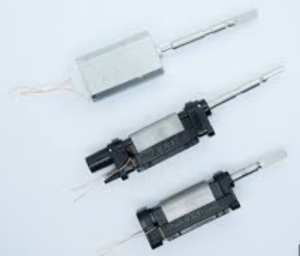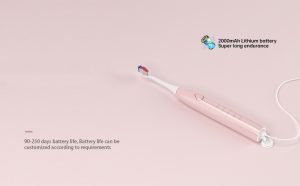In the modern age of innovation, electric toothbrushes have become a staple in households worldwide, providing a more efficient and effective means of oral care. Behind this simple yet sophisticated device lies a complex manufacturing process that requires precision, expertise, and advanced technology. In this blog, we will delve into the different stages involved in the electric toothbrush manufacturing process and explore how electric toothbrush manufacturer ensure the delivery of high-quality products to consumers.
Design and Prototyping
The first stage in the electric toothbrush manufacturing process is the design phase. This is where manufacturers collaborate with engineers and designers to conceptualize the brush’s overall appearance and functionality. The goal is to create a sleek, ergonomic design that ensures ease of use while maximizing cleaning efficiency.
During this phase, manufacturers create prototypes using Computer-Aided Design (CAD) software. The prototype is tested for functionality, durability, and performance. In some cases, these designs are also put through user trials to gather real-world feedback.
For instance, a leading electric toothbrush manufacturer might develop multiple prototypes before arriving at a final design that passes rigorous standards for bristle softness, handle comfort, and motor efficiency. Data shows that nearly 50% of electric toothbrush users prioritize ease of handling, making this stage critical for consumer satisfaction.
Component Sourcing
Once the design is finalized, the next phase is sourcing the materials required to build the toothbrush. Key components include the motor, battery, bristle head, and plastic casing. Ensuring high-quality components is essential for durability and performance.
Electric toothbrush manufacturers often work with specialized suppliers to acquire materials that meet specific safety and durability standards. For example, the motor must be powerful enough to generate sufficient brush strokes per minute (usually between 25,000 to 30,000) without compromising battery life. Data from industry reports highlight that toothbrush motors are generally tested for up to 1,000 hours of use.
Bristles, too, are carefully selected to ensure they provide effective cleaning without damaging tooth enamel or gums. Many manufacturers have started adopting environmentally friendly materials, which aligns with the growing demand for sustainability in the manufacturing process.
Assembly and Integration
Once the components are sourced, the actual assembly of the electric toothbrush begins. Electric toothbrush manufacturers typically rely on automated assembly lines for precision and efficiency.
The bristle head, motor, and battery are carefully integrated into the plastic casing. Some advanced models also include Bluetooth technology, pressure sensors, and multiple cleaning modes, which further complicates the assembly process.
For example, high-end electric toothbrushes that feature app integration require a separate circuit board to be installed, adding another layer of complexity. The assembly process for such brushes can take longer, but the added features contribute to a more personalized brushing experience.
A case study involving a global toothbrush brand revealed that their assembly process allowed for the production of over 1 million units per month, thanks to automated systems and precise integration protocols.
Quality Control and Testing
Once assembled, every electric toothbrush undergoes rigorous quality control to ensure it meets both regulatory standards and consumer expectations. Testing usually includes checking the motor’s performance, battery life, water resistance, and the durability of the bristle head.
A notable aspect of electric toothbrush manufacturing is the water resistance test. Since electric toothbrushes are often used in humid environments, they must be waterproof to prevent internal damage. This is typically achieved through rigorous sealing techniques, followed by immersion tests where toothbrushes are exposed to water for extended periods.
According to industry standards, the average electric toothbrush must last between three to five years, which is why durability testing is a key focus for manufacturers. Data shows that toothbrushes that undergo extensive stress testing—simulating up to 1,000 brush cycles—report far fewer instances of product failure.
Packaging and Distribution
Once the toothbrushes have passed all quality control measures, the next step is packaging. Electric toothbrush manufacturers aim to package their products in a way that is both protective and visually appealing.
Sustainability has become a major focus, with many manufacturers adopting recyclable packaging materials and minimizing plastic use.
After packaging, the toothbrushes are distributed to various markets, with some manufacturers using direct-to-consumer models, while others partner with retailers. The logistical aspect of distribution plays a key role in ensuring the product reaches consumers in optimal condition.
Post-Market Surveillance and Feedback
The final stage in the electric toothbrush manufacturing process is post-market surveillance. Once the product reaches the consumer, manufacturers closely monitor its performance in the market through consumer feedback, warranty claims, and product reviews.
Post-market surveillance helps electric toothbrush manufacturers identify any potential issues that may not have surfaced during quality control. For example, if multiple consumers report the same issue, such as battery degradation or motor failure, the manufacturer can trace the root cause and make improvements in future production runs.
In a real-world example, a major toothbrush brand used customer feedback to redesign their bristle head after reports of discomfort during use. This adaptive approach has allowed manufacturers to maintain customer satisfaction and continuously improve their products.
-300x169.jpg)

